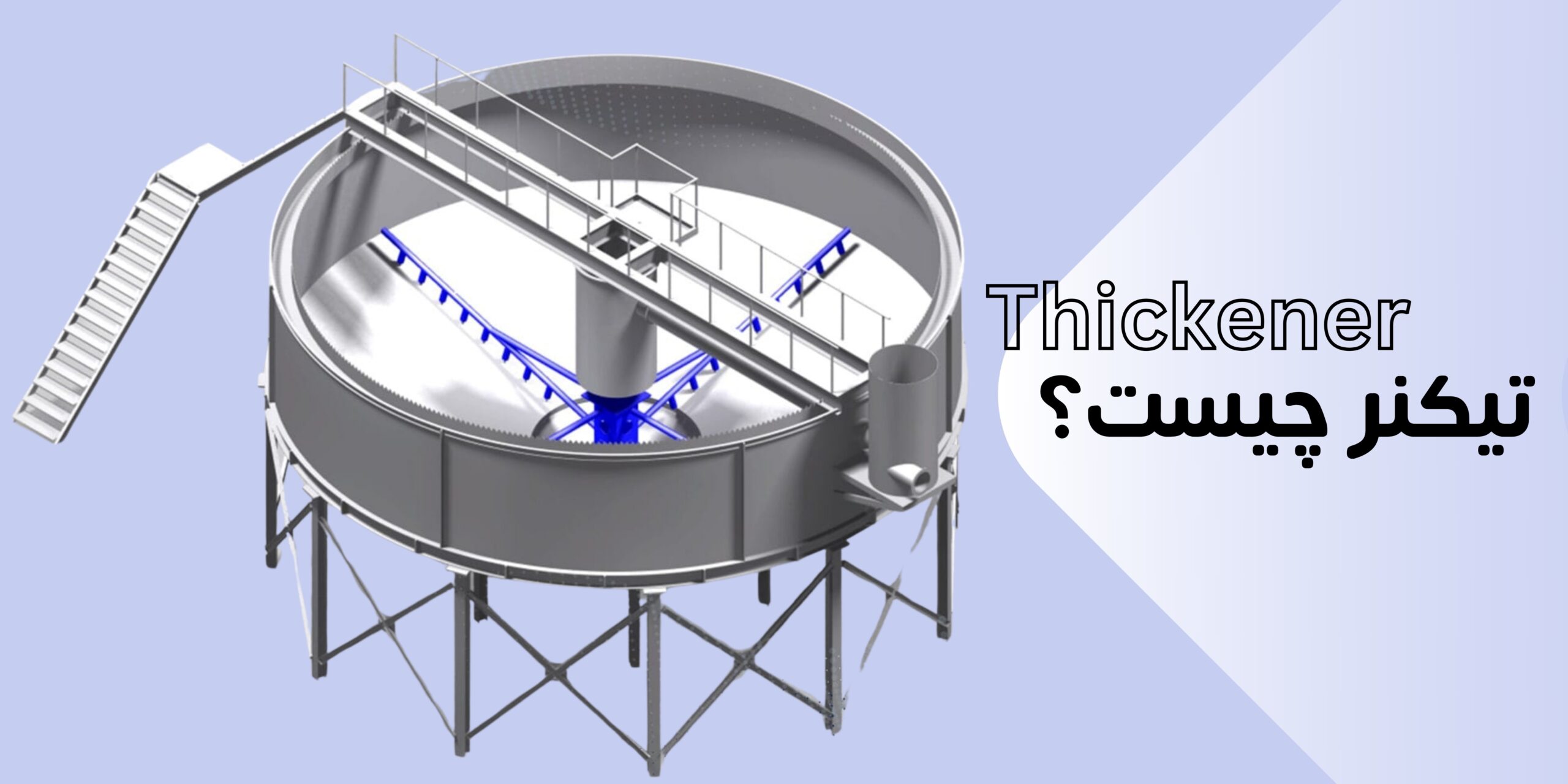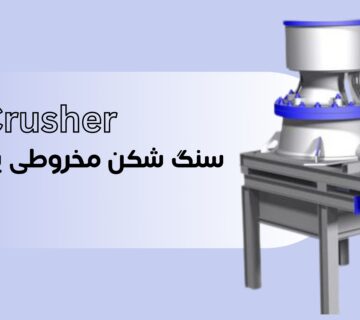Thickeners are part of waste water extraction systems in mines and refineries, which, based on sedimentation, help to recover and purify the output pulp of factories and reuse water.
Thickeners are basins in which settling or separation of liquid from solid is done based on gravity forces, centrifugal force, specific weight difference and the effect of flocculant chemicals.
Following the settling of solid grains in a pulp, a clear liquid and a thickened pulp are obtained, each of which is removed and collected from separate parts.
Thickeners can work continuously or discontinuously. In the following, we will introduce more, check how the thickener works and its components.
The settling speed of solid particles in a fluid can be obtained depending on the dimensions of the particles using Stokes and Newton laws. The settling speed of very small micron particles under the influence of their weight is very low.
Therefore, it may be necessary to increase the speed of their fall by using centrifugal force.
It is also possible to adjust the environmental conditions in such a way that fine-grained materials adhere to each other under the influence of the van der Waals force and settle at a faster rate, which is called coagulation, or use polymers called flocculants, so that the particles settle at a very high speed, which It is called flocculation.
Thickner consists of a cylindrical pond with a diameter between 2 and 200 meters and a depth between 1 and 7 meters, depending on its capacity.
The primary pulp enters the thickener tank through a tube located in the central part, and its end is sunk into the pulp in the thickener pond by a few decimeters, so as to create as little turbulence as possible in the environment.
As a result of the settling of solid particles, a layer of clear liquid is formed in the upper part of the thickener, which is called Over Flow or thickener overflow, and it exits through a channel that is planned around the upper part of the thickener.
The solid particles are also directed out in the form of thickened pulp from the thickener which is installed in the central part of the lower part in the form of a duct.
To facilitate the discharge of settled seeds, the lower part of the thickener has a gentle slope towards the center.
In addition, one or more rotating arms equipped with a series of vanes are placed at the bottom to direct the deposited material to the central channel.
In newer thickeners, these arms are designed in such a way that in case of excessive force being applied to them, they automatically move up to avoid damage.
Tickner benefits
The construction of thickener in mines and various industries has many advantages, which are discussed below:
- Easy management and maintenance and reducing the need for manpower
- Recovery of used water up to 60% with filter press system
- Environmental protection by concentrating sludge and slurry and recycling raw materials
- Saving water consumption and reducing the current costs of the production unit
- Providing sludge and waste management and facilitating the transfer and transport of the separated solid phase
- It is possible to reduce the output cake or sludge to almost dry powder by means of a filter press
- Bringing purified water back to the beginning of the production line with Tickner’s principled design and construction
- The area of land used is very limited instead of tailings dams or sewage evaporation tanks
- Increasing the safety and life of mines due to the reduction in the volume of production tailings in the washing process
- Compliance with the ever-increasing environmental requirements from authorities overseeing mining activities
- The low operating cost of the thickener compared to the cost of development and maintenance of tailings ponds



بدون دیدگاه